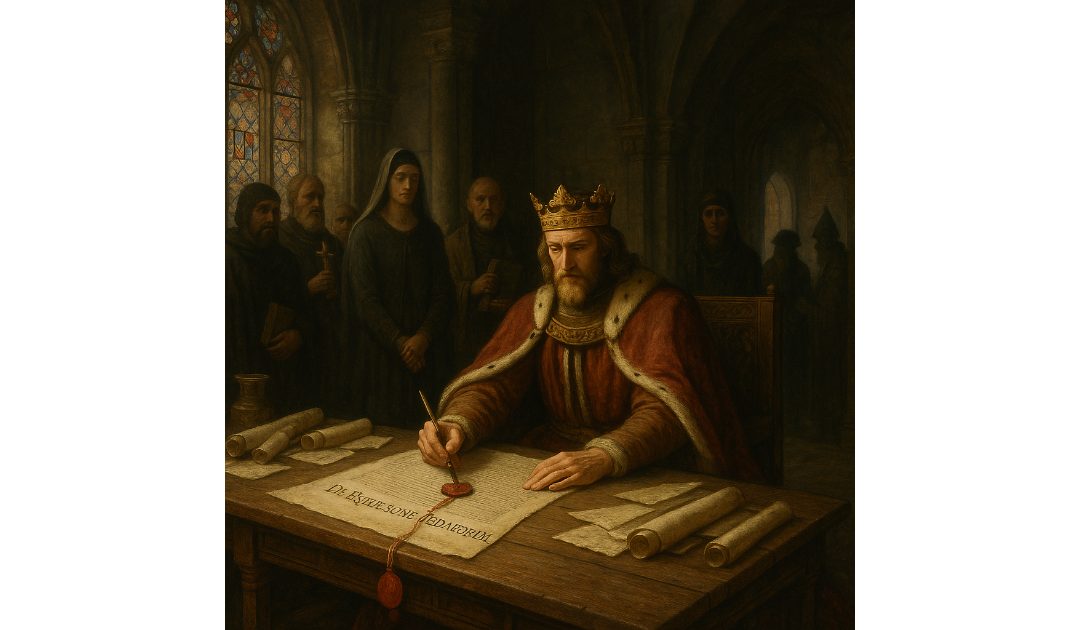The 18th of July strikes me as bad day for Jews. It was on this day in 1925 that Adolf Hitler published Mein Kampf, and it was the day in 1290 that King Edward I, or Edward Longshanks, issued his Edict of Expulsion, which banished all Jews from England.
Edward Longshanks, also known as Edward I of England, was a formidable monarch whose reign from 1272 to 1307 left an indelible mark on British history. Born on the 17th of June, 1239, to King Henry III and Eleanor of Provence, Edward earned the nickname “Longshanks” due to his impressive height, standing over six feet tall remarkably tall for his era.
Edward’s early years were shaped by political turbulence and rebellion. During the Second Barons’ War (12641267), he was initially captured by Simon de Montfort’s forces but later escaped, rallying royalist troops to victory at the Battle of Evesham in 1265. This pivotal experience honed his military and leadership skills, laying the groundwork for his assertive kingship.
Ascending the throne in 1272 while returning from the Ninth Crusade, Edward’s reign was marked by ambition, legal reform, and military campaigns. His legal reforms, known as the “Statutes of Westminster,” aimed to strengthen royal authority, standardise laws, and establish clearer property rights. These reforms contributed significantly to the development of English common law.
Edward’s military campaigns were equally defining. His conquest of Wales was a major achievement; after decisive battles and strategic castle-building, he subdued the Welsh princes by 1283, integrating Wales into the English realm. He ensured control by constructing an impressive chain of fortresses, including Caernarfon and Harlech Castles, which remain iconic today.
However, Edward’s ambition extended northward. His attempts to dominate Scotland led to prolonged conflicts, famously depicted in popular culture. After the death of the Scottish king, Alexander III, Edward sought to assert overlordship, triggering the Wars of Scottish Independence. His adversaries included figures like William Wallace and Robert the Bruce, whose fierce resistance challenged Edward’s authority. Despite initial victories, Edward faced persistent opposition, and his efforts to subdue Scotland remained incomplete at his death.
Edward’s reign also reflected a complex relationship with his subjects. While respected for his administrative acumen and military prowess, he was often ruthless, especially towards the Jewish population. His 1290 Edict of Expulsion forced the expulsion of Jews from England, a decree that remained in effect for centuries.
In personal life, Edward married Eleanor of Castile, with whom he had a strong partnership and numerous children. Their deep bond was evident in Edward’s grief after her death in 1290, commemorated by the “Eleanor Crosses” he erected in her honour along the route of her funeral procession.
Edward Longshanks died on 7 July 1307 while on campaign against the Scots. His legacy is multifaceted: he was a determined ruler who expanded and consolidated his kingdom, implemented enduring legal reforms, and demonstrated both admirable leadership and harsh authoritarianism. His reign set the stage for future conflicts and developments in British history, earning him a reputation as one of medieval England’s most significant, if controversial, monarchs.

